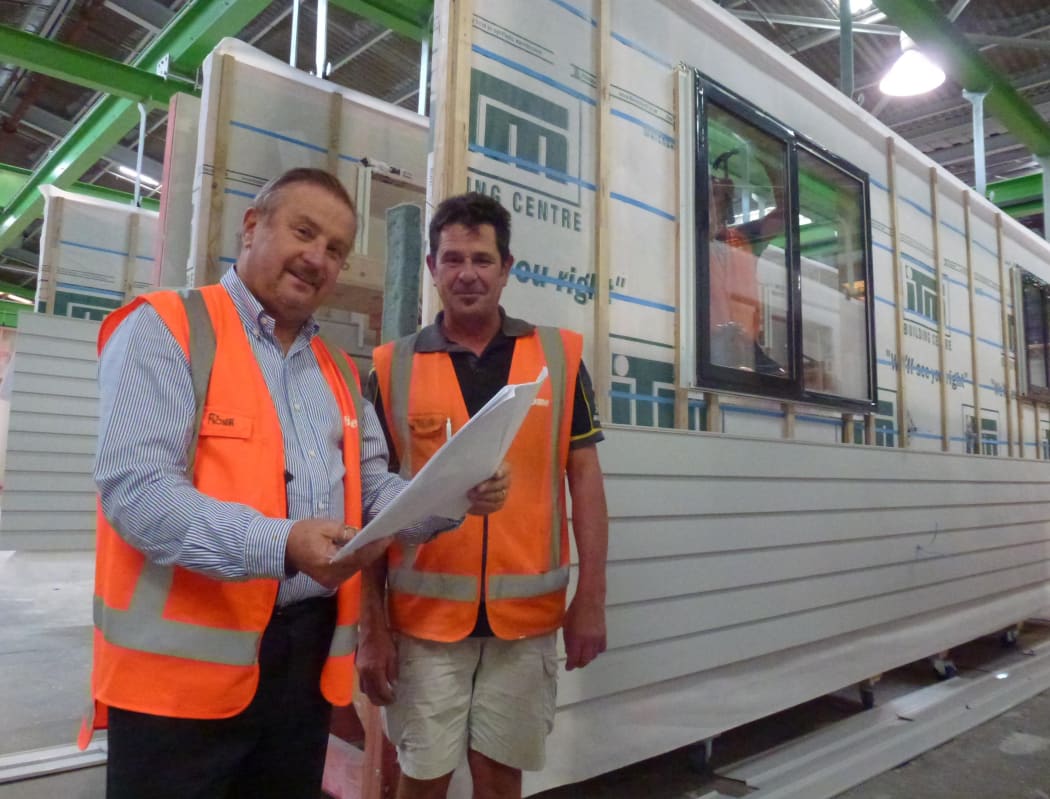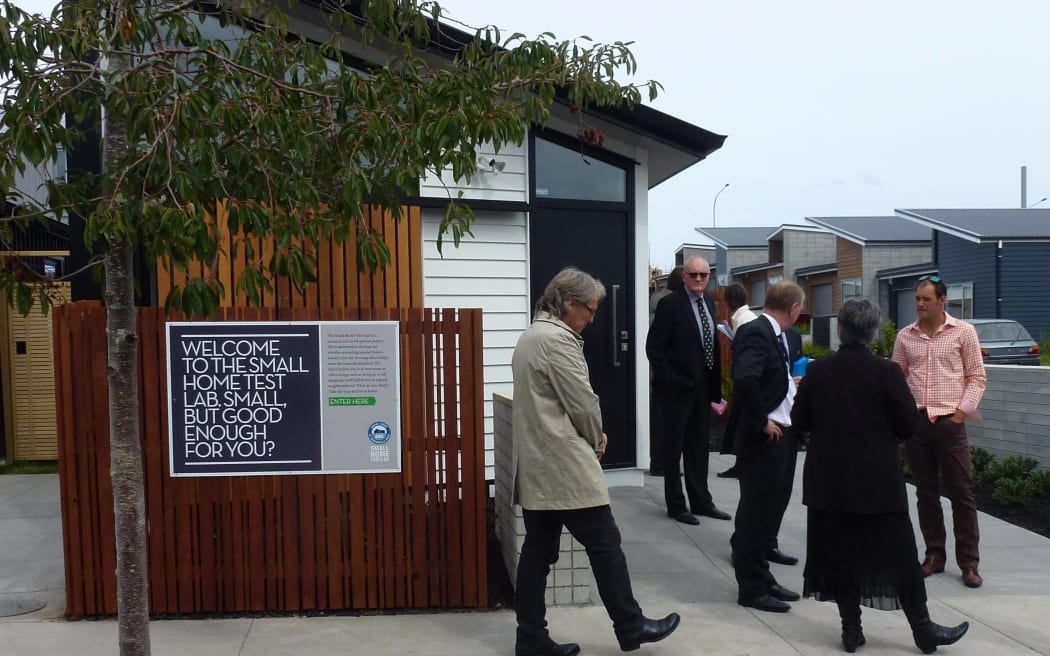
Todd Niall Photo: RNZ
The long-term task is underway of winding back Auckland's housing shortage, estimated to be about 30,000 dwellings.
A host of policies, initiatives and ideas will begin ramping up this year, aimed at both building more homes, and making new homes cheaper.
The housing shortage has been aggravated by a slump in construction from the mid-2000s, as the city's population continued to grow. The low build-rate has fuelled housing prices, with the median price of homes sold in February measured by the Real Estate Institute at $625,000.
As recently as early last year, the annual rate of consents for new dwellings was below 5000, while council and government officials say a sustained rate of 13,000 per year is needed over the next 30 years. Latest figures show the annual rate has climbed to nearly 6,500.

eHome managing director Marsh Hudson and production manager Steve Jujnovich at the Kumeu assembly line. Photo: RNZ
New technology is being touted as part of the drive for cheaper new homes. The company eHome is one of the first to set up a house factory, producing ready-to-assemble homes on a production line, with state-of-the-art German machinery.
Managing director Marsh Hudson said the production line can produce a house in 12 hours. The end result is complete wall sections, from painted cladding on the outside, through to undercoated linings on the inside. Windows and insulation are fitted, and details such as holes pre-cut for electrical fittings.
It can be assembled and enclosed on site in another 12 hours.
Mr Hudson said from 50 homes last year, he expects to produce 300 this year, for both housing agencies, and a private developer. Off site manufacturing does not yet have the scale to be significantly cheaper than traditional building, but Mr Hudson said it already has advantages.
He said it removes the weather factor which can delay normal construction, ensures better and consistent quality, and needs fewer qualified builders.
Marsh Hudson said production costs should decline, as with most forms of manufacturing, and he believes most of the country's timber-framed homes will be built in factories within a decade.
"I would say in 10 years time something like 80 per cent of timber-framed homes will be built this way," said Mr Hudson. "In that time manufacturing costs will decline, and skilled labour costs will increase. Our proposition will become more and more attractive."
Building smaller is an obvious way to lower costs. The most extreme approach is being trialled at the state-owned Hobsonville Point development in Auckland's north-west.

Will tiny homes impress the public? Photo: RNZ
Public reaction is being sought on three stand-alone homes built on a single 450 square metre site.
Architect Chris Kelly said within a much smaller than usual footprint, they have tried to fit in all the features buyers might want, such as a barbecue area, garden shed and outdoor clothesline.
The most radical concept is a single bedroom home of just 40 square metres, on a 110 square metre site. It features double-glazing, a heat-retaining concrete floor, and is positioned to capture the sun. Those behind the designs said the sizes are not as radical as one might think.
"It wasn't that long ago that we were building state houses at 80 or 100 square metres," said designer David Irwin. "We've only in the last 20 to 30 years had this appetite for these massive homes, on average over 200 square metres. We're the builders of the second-largest homes in the world."

'The Brickworks' at Hobsonville Point was two-thirds sold before construction began. Photo: RNZ
Hobsonville Point, on the rural fringe, has also broken the stereotype of apartment living as an inner-city concept. A three storey apartment block was two-thirds sold before construction began. The developer said it offers a lifestyle in a premium location, at a far lower price than standalone homes or townhouses.
These new ideas may be attractive to new home buyers, but new homes each year currently make up less than 1.5 percent of Auckland's total housing market.
Professor of property at the University of Auckland's Business School Larry Murphy said new home construction, unless on a colossal scale, will not be enough to affect prices in the overall housing market.
He said it will be almost impossible to measure the impact of policies aimed at boosting home construction as a counter to rising prices.
Professor Murphy said the housing market has changed significantly thanks to new ways of financing and producing homes, the role housing plays in people's wealth strategies, and the way banking has become "enthralled" with the housing market.
"The question is, can we re-engineer to get back to an earlier system. It's very hard to unwind those processes," he said.
Housing Accord
The biggest policy focus to boost home construction is the Housing Accord signed last year between the Government and Auckland Council.
It provides for Special Housing Areas, in which planning processes can be fast-tracked, and the ability to appeal is reduced. Its goal is to lift dwelling consents over a three-year period to 39,000. That is more than double the rate at which housing was being consented last year.
Since the 1 October start of the accord, 22 special housing areas have been designated and as many as 80 applications are still in the pipeline.
Minister of Housing Nick Smith said the policy is off to a good start.
Rising mortgage interest rates are expected to slow the double-digit rate at which Auckland's housing prices have been rising. A further dampener is the Reserve Bank rules which limits to 10 percent the proportion of new lending going to buyers with a deposit lower than 20 percent. Most of those are expected to be first home buyers.
However Westpac Bank chief economist Dominick Stephens does not expect the changes to slow the acceleration of new home construction.
"The building industry is reacting with a lag, to a very powerful incentive it has been given over a couple of years," said Mr Stephens. "The gap between the price of a bare section, and a section with a house on top of it has widened, giving a larger builders' margin. I think there will be a big lift in the rate of construction in Auckland in the next couple of years.
The task of boosting supply is daunting. Even if the Housing Accord's target of 39,000 consents is met over three years, Auckland would need to maintain an equivalent rate for nearly three decades to match demand.

